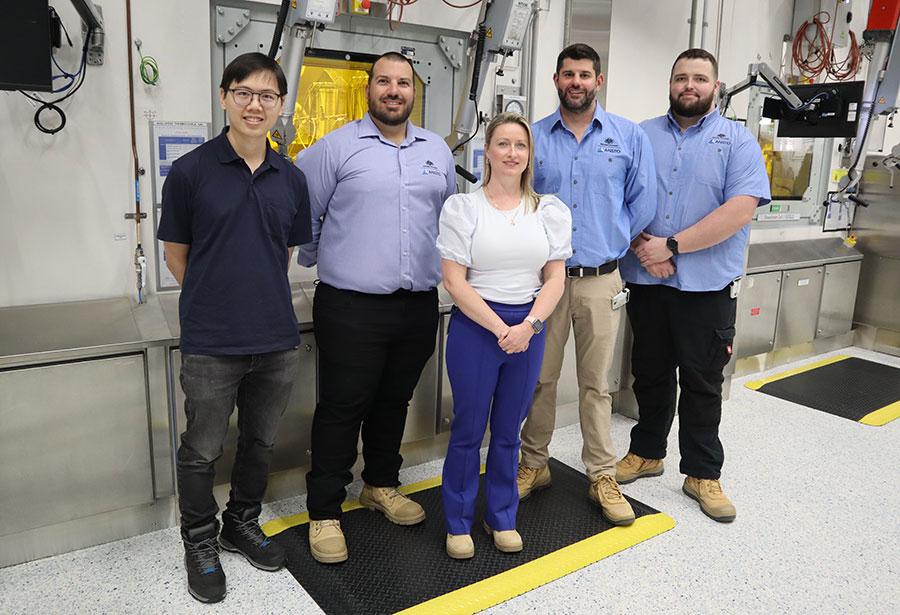

Published on the 26th August 2024 by ANSTO Staff
A collaborative effort between the Australian National University (ANU), Nuclear Medicine, Molybdenum-99 Manufacturing and the Health Research and Technology group at ANSTO has led to significant advancements in nuclear physics and medicine. This joint initiative has developed a new capability in solid surface radiolabelling to evaluate Auger emitting sources for next-generation targeted therapy.
Dr Maxine Roberts, lead scientist at ANSTO, remarked, "This nuclear science research drew on the unique capabilities of the teams in Lucas Heights and Canberra and may lead to improvements in cancer treatment internationally."
ANSTO researchers worked with the ANU team to create a device that forms an ultra-thin layer of radioisotopes on metal surfaces. This innovation has enabled groundbreaking nuclear physics experiments at ANU's Nuclear Physics Department and Accelerator Applications.
The research has been reported in the journal Applied Radiation and Isotopes (2024, volume 211, 111405) and previously featured in the journal Physics Review C (2019, 100, 034313). It was also the PhD subject of Dr Bryan Pi Tee, when he was studying at ANU.
“The primary goal of this research is to enhance our understanding of how radioisotopes emit energy, which is crucial for medical treatments. This knowledge can be used for more precise dosimetry evaluation, thereby enabling more effective use of radioisotopes to treat various diseases, including different types of tumours, potentially leading to better patient outcomes,” said Dr Bryan Tee.
An ultra-thin layer of the radioisotopes iodine-125 and molybdenum-99 was uniformly deposited on metal plates (gold, silver, or aluminium) using a liquid/solid phase interaction method at ANSTO Lucas Heights.
The radiolabelled sources were then transported to ANU for analysis using low-energy Auger electron spectroscopy to measure the energy distribution and number of Auger electrons per nuclear decay.
The new data will enhance patient dosimetry at the nano-scale level, contributing to safer and more effective cancer treatments worldwide.
“It is great to see ANSTO’s molybdenum-99 being used, not only for current patient treatments but also to advance the field of nuclear medicine in general,” says Warren Brown, Manufacturing Manager for Nuclear Medicine Production.
The results of these studies will be published in a new atomic radiation database called NS-Radlist, aimed to then be integrated into the GEANT4-DNA database, a free open-source resource for sub-keV energy electron physics models.
This will make the information globally accessible, particularly for clinical medical physicists calculating radiation doses for patients. Accurate dosimetry will lead to safer cancer treatments with fewer side effects due to more precise dosing.
https://doi.org/10.1016/j.apradiso.2024.111405
Thanks to Dr Maxine Roberts for her contribution in writing the article.



